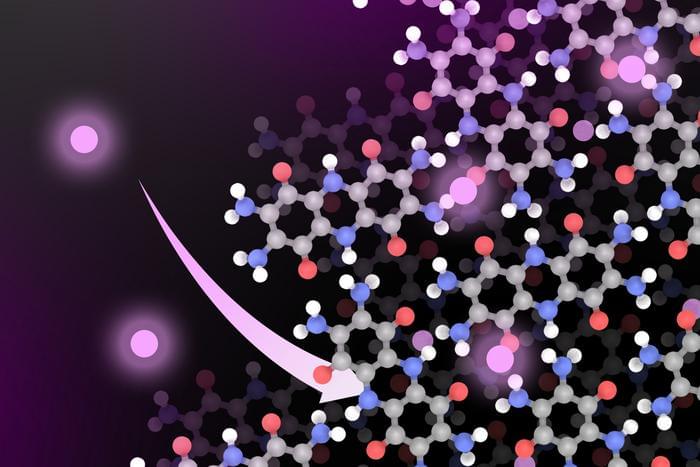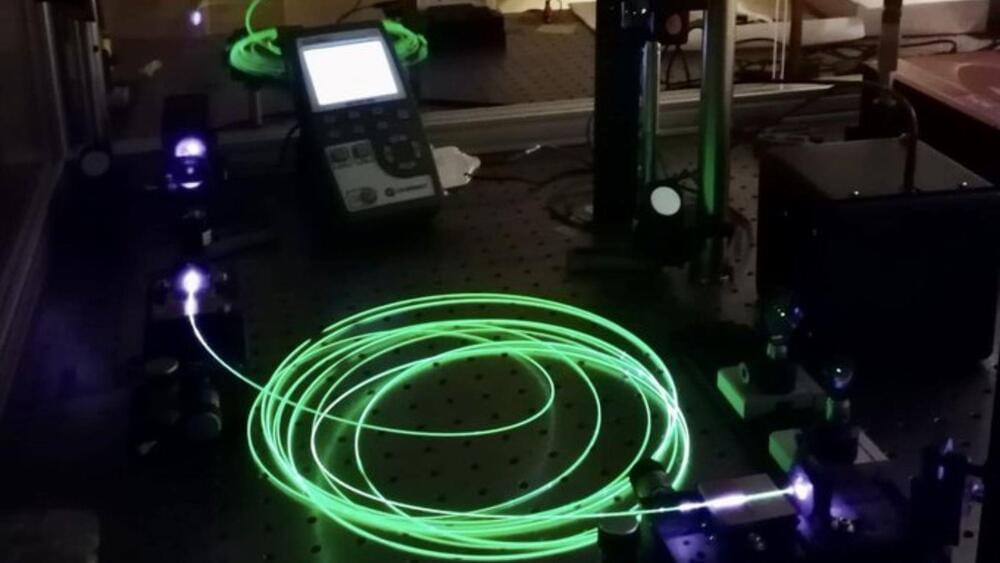Carbon’s crystalline form works well with renewables’ high voltages and currents.




North Korea claimed to have launched a new solid-fuel, intermediate-range missile with a hypersonic warhead, aiming to test its reliability and maneuverability. The missile, designed to strike U.S. military bases in Guam and Japan, flew approximately 620 miles before landing between the Korean Peninsula and Japan. The test follows a previous claim of successfully testing […] The post North Korea Unveils New Missile Designed for US Mainland…

Researchers develop artificial ‘power plants’ in the form of tiny leaf-shapes to harness energy from the wind and rain.

“I think this material could have a big impact because it works really well,” said Dr. Mircea Dincă. “It is already competitive with incumbent technologies, and it can save a lot of the cost and pain and environmental issues related to mining the metals that currently go into batteries.”
Electric vehicles (EVs) have become a household name in the last few years with several companies fighting to compete in the everchanging EV landscape as EV technology continues to improve in cost, efficiency, and the materials used to manufacture the batteries responsible for sustaining this clean energy revolution. While EV batteries have traditionally used cobalt for their battery needs, a recent study published in ACS Central Science discusses how organic cathode materials could be used as a substitute for cobalt for lithium-ion batteries while potentially offering similar levels of storage capacity and charging capabilities, as cobalt has shown to be financially, environmentally, and socially expensive.
“Cobalt batteries can store a lot of energy, and they have all of features that people care about in terms of performance, but they have the issue of not being widely available, and the cost fluctuates broadly with commodity prices,” said Dr. Mircea Dincă, who is a W.M. Keck Professor of Energy at MIT and a co-author on the study.
For their study, the researchers constructed a layered organic cathode comprised of cellulose, rubber, and other Earth-based elements. The team then subjected their organic cathode to a variety of tests, including energy storage, delivery, and charging capabilities. In the end, they found their cathode’s capabilities exceed most cobalt-based cathodes, including a charge-discharge time of 6 minutes. Additionally, while battery cathodes are known for significant wear and tear due to cracking from the flow of lithium ions, the researchers noted that the rubber and cellulose materials helped extend the battery cathode’s lifetime.

The research project demonstrated a power output of 20 watts using a fiber-optic laser and aims to increase this to kilowatts in the future.
The main goal of the WiPTherm project was to create an innovative wireless energy transfer system that could recharge energy storage components on micro and nano-sized satellites.
The IFIMUP was tasked with developing thermoelectric sensors capable of absorbing light at 1,550 nm and using them to charge energy storage devices.
After three years of work, the consortium tested their technologies at the São Jacinto airbase in Aveiro, a city on the Portuguese west coast. During this display, the research team succeeded in generating 20 watts of power output using a fiber optic laser and directed it to the sensors.

The new method from ETH Zurich departs from traditional carbon capture, relying on temperature or pressure, minimizing energy consumption.
The details of the study, led by Maria Lukatskaya, Professor of Electrochemical Energy Systems at ETH Zurich, were published in the journal ACS.
Acid switch
The team at ETH Zurich utilized the principle that CO2 exists in its gaseous form in acidic aqueous solutions. In contrast, in alkaline aqueous solutions, it undergoes a reaction to produce carbonates, referred to as salts of carbonic acid. This chemical transformation is reversible, and the acidity level of a liquid decides whether it contains CO2 or carbonates.

Hyperion, a California-based company, has unveiled a hydrogen-powered supercar the company hopes will change the way people view hydrogen fuel cell technology.
The Hyperion XP-1 will be able to drive for up to 1,000 miles on one tank of compressed hydrogen gas and its electric motors will generate more than 1,000 horsepower, according to the company. The all-wheel-drive car can go from zero to 60 miles per hour in a little over two seconds, the company said.
Hydrogen fuel cell cars are electric cars that use hydrogen to generate power inside the car rather than using batteries to store energy. The XP-1 doesn’t combust hydrogen but uses it in fuel cells that combine hydrogen with oxygen from the air in a process that creates water, the vehicle’s only emission, and a stream of electricity to power the car.

Bipolar membranes (BPMs) are a class of ion-exchange membranes typically comprising a cation-and an anion-exchange layer. While these membranes have recently been integrated in various electrochemical devices for a wide range of application, the processes underlying their operation are not yet fully understood.
Researchers at the Massachusetts Institute of Technology (MIT) recently developed a new mechanistic model that explains the forward bias polarization mechanisms of BPMs in mixed electrolytes with varying acidities and basicities. Their model, introduced in Nature Energy, could guide the development of strategies to overcome the issue of ionic blockades, which can adversely impact the performance of forward bias BPM devices.
“We were initially trying to design an electrolyzer that converts carbon dioxide CO2 into useful feedstocks or fuels using bipolar membranes (BPMs),” Yogesh Surendranath, co-author of the paper, told Tech Xplore. “To provide a little context, CO2 electrolyzers are most efficient when operating with alkaline electrolyte solutions such as potassium hydroxide, but because CO2 is an acid gas, it reacts with alkaline solutions to produce carbonate solutions over time.”

Winter in the northern hemisphere is always a brutal reminder for the shipping industry that routing vessels efficiently is a big challenge. Winter storms bring low visibility conditions, freezing spray, and sea ice, all of which can lead to catastrophic results if not appropriately navigated, including lost cargo, damaged hulls and even potentially toppling a ship in the most extreme weather. But this January adds additional pressures to the sector with new and enacted regulations around greenhouse emissions and carbon usages. The beneficial news is that in both scenarios, weather intelligence can help those navigating the open seas better plan and safely and efficiently navigate these waters.
While most of us know that weather impacts nearly every aspect of shipping, we likely think of it in terms of safety of people and cargo. According to The Swedish Club 2020 loss prevention report, heavy weather is cited in half of all claims and contributes to 80% of the financial losses. Weather optimized routing uses real-time weather forecasts, oceanic data, and the vessel’s current position to keep captains at sea and voyage managers on land about changing conditions. If there is hazardous weather, most voyage routing algorithms can make numerous calculations in real time and provide one or more alternatives for a ship operator to optimize a route. While ultimately this may not be the most efficient route, it will likely be the safest route for current conditions.
Weather intelligence is also critical in evaluating, and potentially adjusting, greenhouse gas emissions based on vessel performance and fuel usage. The Carbon Intensity Indicator (CII) introduced in 2023 is a rating framework that evaluates how efficiently a ship transports goods or passengers from a carbon emissions standpoint. This is the first year that ships will be assigned a rating. The data from the previous year is used in an efficiency conversion ratio. Each ship is assigned an individual CII rating from A to E, with A being the best possible rank.